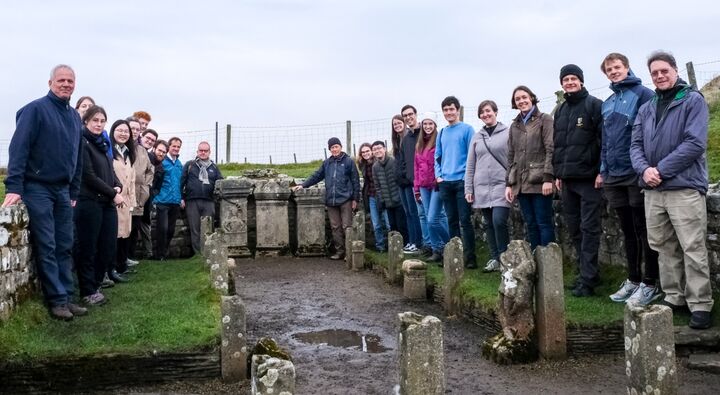Winner of Grant for Epigraphic Educational and Training Courses and Workshops 2021
Peter Haarer (Oxford) – Report 2021
Practical Epigraphy Workshop, Corbridge & Chesters, Northumberland, 27–28 March 2022
After a long break due to the pandemic, it was a pleasure to travel to Northumberland for the eleventh iteration of the Practical Epigraphy Workshop at the Roman sites of Corbridge and Chesters. The main group of participants was divided into two for most of the duration and so, rather than being one workshop, it was really two workshops running in parallel. The resulting organisational and logistical challenges were considerable but the rewards were immense as we could offer a vast array of material for study, as well as accommodating twice the number of participants than had we used a single site. Contextualisation through exploration of the Roman remains in the environs formed an integral part of the course, including visits to Roman Brocolitia with its Mithraeum and the well of Coventina, and the remains of quarrying at Limestone Corner. We also visited Vindolanda on our way home (in an evocative flurry of snow).
The Workshop attracted eighteen high-calibre students at various stages of their careers, ranging from undergraduates to post–docs, and representing countries from across the globe (twelve from Britain & Europe, and a further six from the US, Australia, Hong Kong, and China). For most, this was their first ever visit to Hadrian's Wall and there was an audible gasp of delight on entering the exhibition at Corbridge and on seeing the Clayton Collection at Chesters. The immense satisfaction in dealing with real inscribed material in the field rather than publications in libraries was also very evident.
No event of this kind can succeed without a strong and reliable team. This included Roger Tomlin (Oxford), Charles Crowther (Oxford), Henning Schulze (Lincoln), and Olivia Elder (Oxford) who kindly stepped in at short notice to act as a very capable assistant director. Behind the scenes, Frances McIntosh and team at Corbridge and Chesters made sure that we had access to all of the material and facilities that we needed, while Chloe Colchester at the Centre for the Study of Ancient Documents in Oxford provided vital administrative support.
We must also thank our generous sponsors: the Centre for the Study of Ancient Documents, Oxford, the Craven Committee, Oxford, the Trustees of the Clayton Roman Trust and, of course, the Association Internationale d’Épigraphie Grecque et Latine (AEIGL).

